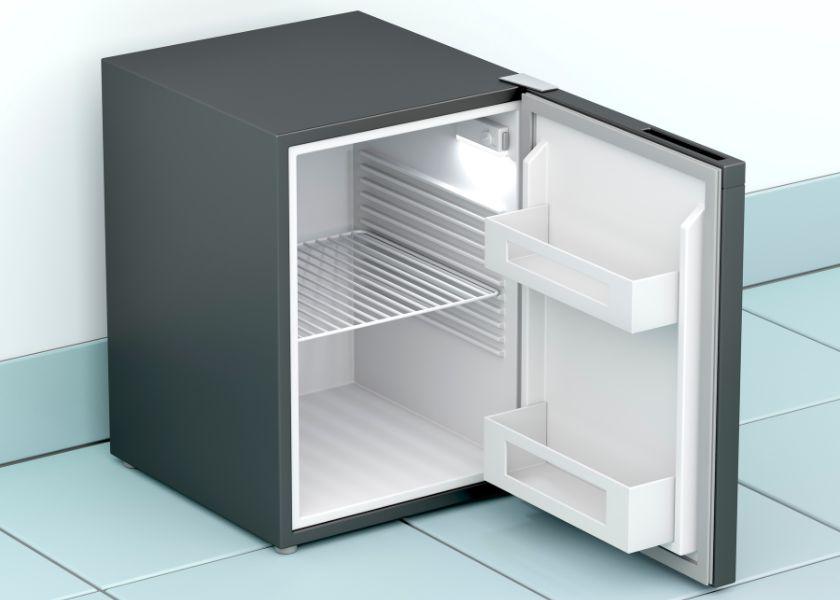It’s Cool to Protect Vaccine Integrity

A barn refrigerator may hold many treasures, from cooled colostrum to workers’ lunches and drinks.
But the most precious cargo of all in a barn fridge is most likely the biologics you purchase to vaccinate your herd to prevent diseases. Dr. Emmanuel Rollin, Clinical Associate Professor of Dairy Production Medicine at the University of Georgia College of Veterinary Medicine, said protecting the integrity of vaccines in the final stage before they are administered is a form of on-farm risk management.
“These products are handled carefully from the manufacturer to the distributor to the shipper. It’s our job to take care of them in the last leg, right before they reach the animal,” Rollin shared on a recent episode of “Have You Herd?,” the official podcast of the American Association of Bovine Practitioners.
Rollin and his colleagues recently conducted and published a study evaluating the performance of barn refrigerators at 20 commercial dairies and veterinary clinics in Georgia, South Carolina, and Florida. They sought to determine how effectively those real-life refrigeration systems held temperatures within the commonly recommended temperature interval (RTI) for vaccine storage, which is 36-46°F.
The three most popular types of refrigerators on farms are: (1) the small, dorm-sized models, which are very inexpensive and have limited functions, including the fact that the freezer compartment usually does not have a defrost cycle; (2) household refrigerators, which are more spacious and often have a dial to adjust coolness, but not an exact temperature setting; and (3) commercial refrigerators, which are designed for the restaurant industry. They generally can be set to an exact temperature, have better temperature distribution because they have wire shelves versus solid surfaces; and many have airflow circulation systems.
The researchers used a commercial data logger to measure the temperature both inside the refrigerators and the ambient air temperature outside of them, every 10 minutes for six months. This resulted in more than a million data points from which they were able to extrapolate results.
Overall, the units posted internal refrigeration temperatures outside of the RTI 22% of the time. The biggest culprit: household units, which were found to be outside the RTI 37% of the time. Commercial refrigerators were much more precise, falling outside the RTI just 2% of the time.
Surprisingly, mini, dorm-style fridges didn’t fare as badly as expected, but still fell outside the RTI 27% of the time. “I want to hate on the mini fridges, but actually they were similar in performance to the household ones,” noted Rollin. He said that could be due in part to the fact that they are packed tighter and may not be opened and closed as much as larger units that also hold drinks and lunches.
Mean daily temperature ranges (MDTR) – meaning how widely temperatures would swing during a 24-hour period -- also were measured. Overall, units had MDTRs from 1-14°F. Again, household units fared the worst, with an average MDTR of 9.5°F, while commercial units did the best, at 5.4°F.
When household units fell out of RTI, they were more likely to become too cold versus too warm. They often got cold enough to freeze product. Rollin explained that many household models are cooled by transferring air from the freezer compartment into the refrigerator section, so some sections will be very cold and others too warm.
Armed with these findings, Rollin recommended the following measures to better manage on-farm refrigeration and protect vaccine integrity:
- Purchase a thermometer to better monitor (and adjust accordingly) the internal temperature of mini and household refrigerators. This could be as simple as a $5.00 kitchen thermometer, to more detailed, digital units that may record the high and low temperature over a 24-hour period.
- Consider storing colostrum in a separate unit, or pre-chilling it with frozen water bottles, so it doesn’t disrupt the internal refrigerator temperature.
- Keep refrigerators in a room that is temperature-controlled, because ambient temperature also was found to influence internal temperature.
- Make sure the unit is level, so the door closes readily.
- Pull units away from the wall for good all-around air flow, so the heat from the compressor has space to escape.
- Prevent rodents from building nests in the refrigerator coils.
- Keep refrigerator contents well-organized, so users can grab what they need without having to hunt for it with the door open.
- If it’s time to replace a unit or build a new facility, upgrade to a commercial refrigerator, which will have far superior temperature regulation.
Rollin noted they were not able to assess what, if any, damage was incurred to vaccines that were stored at temperatures outside the RTI. But considering the inventory on just one of the dairies in the study was valued at more than $15,000, it’s an investment that’s worth protecting with vigilance.
“We rely on these products to prevent disease and protect our herds, so it makes sense to do what we can to protect their efficacy,” he said.







